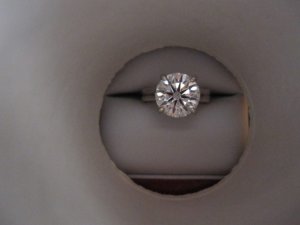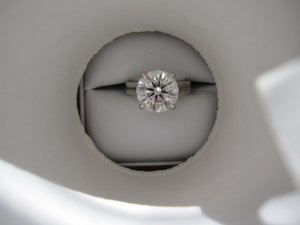newjourney
Rough_Rock
- Joined
- Aug 10, 2015
- Messages
- 72
Hello,
Like many guys joining this forum, I've been visiting from time to time before joining to learn the science behind diamond quality. Many thanks to all passionate contributers who have helped providing a discerning knowledge to people wishing to make an informed purchase.
I've been looking around for round brilliant diamonds and have noticed that not all RB diamonds show arrows in the face up position even when they're AGS000 or 3X's and have similar ideal proportions. Is this a result of diamond placement or angle of the camera positioned by the vendor when taking the picture? For instance, RB's from Whiteflash and GOG almost always shows arrows in the face up position, whereas those from James Allen and BG sometimes lack that image.
http://www.whiteflash.com/loose-diamonds/round-cut-loose-diamond-3227663.htm
http://www.jamesallen.com/loose-diamonds/round-cut/1.31-carat-i-color-vs2-clarity-excellent-cut-sku-322307
I'm aware these are all very reputable vendors and their diamonds are very nice... but I just wanted to know if arrows are typically apparent when viewing face up, especially when a diamond possesses ideal lab scores and physical attributes. I like optical symmetry and will eventually find something in the H&A category or close to it. With the hearts not accessible once a diamond is mounted, being able to see the arrows up top is pretty neat.
Thank you.
Like many guys joining this forum, I've been visiting from time to time before joining to learn the science behind diamond quality. Many thanks to all passionate contributers who have helped providing a discerning knowledge to people wishing to make an informed purchase.
I've been looking around for round brilliant diamonds and have noticed that not all RB diamonds show arrows in the face up position even when they're AGS000 or 3X's and have similar ideal proportions. Is this a result of diamond placement or angle of the camera positioned by the vendor when taking the picture? For instance, RB's from Whiteflash and GOG almost always shows arrows in the face up position, whereas those from James Allen and BG sometimes lack that image.
http://www.whiteflash.com/loose-diamonds/round-cut-loose-diamond-3227663.htm
http://www.jamesallen.com/loose-diamonds/round-cut/1.31-carat-i-color-vs2-clarity-excellent-cut-sku-322307
I'm aware these are all very reputable vendors and their diamonds are very nice... but I just wanted to know if arrows are typically apparent when viewing face up, especially when a diamond possesses ideal lab scores and physical attributes. I like optical symmetry and will eventually find something in the H&A category or close to it. With the hearts not accessible once a diamond is mounted, being able to see the arrows up top is pretty neat.
Thank you.










300x240.png)